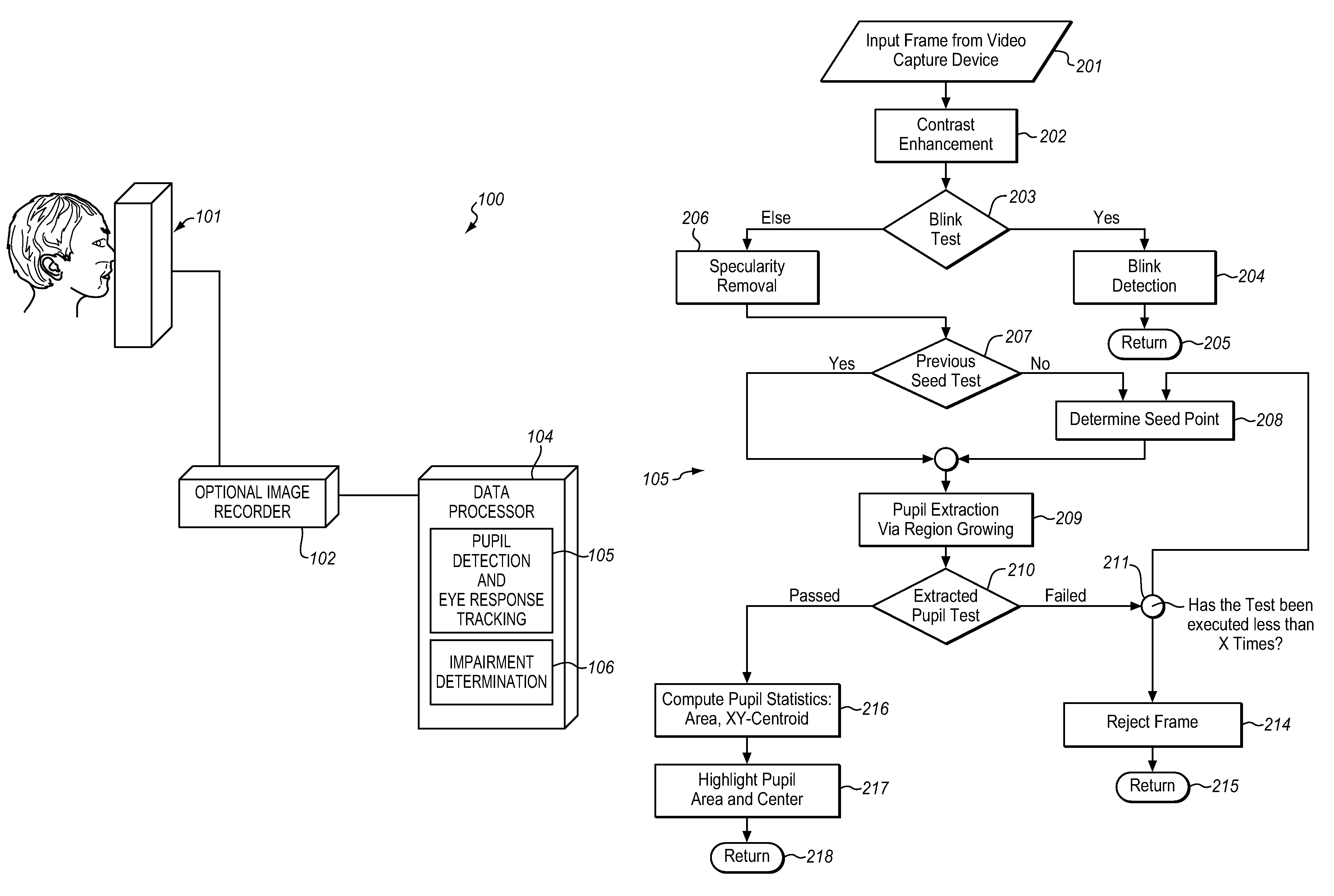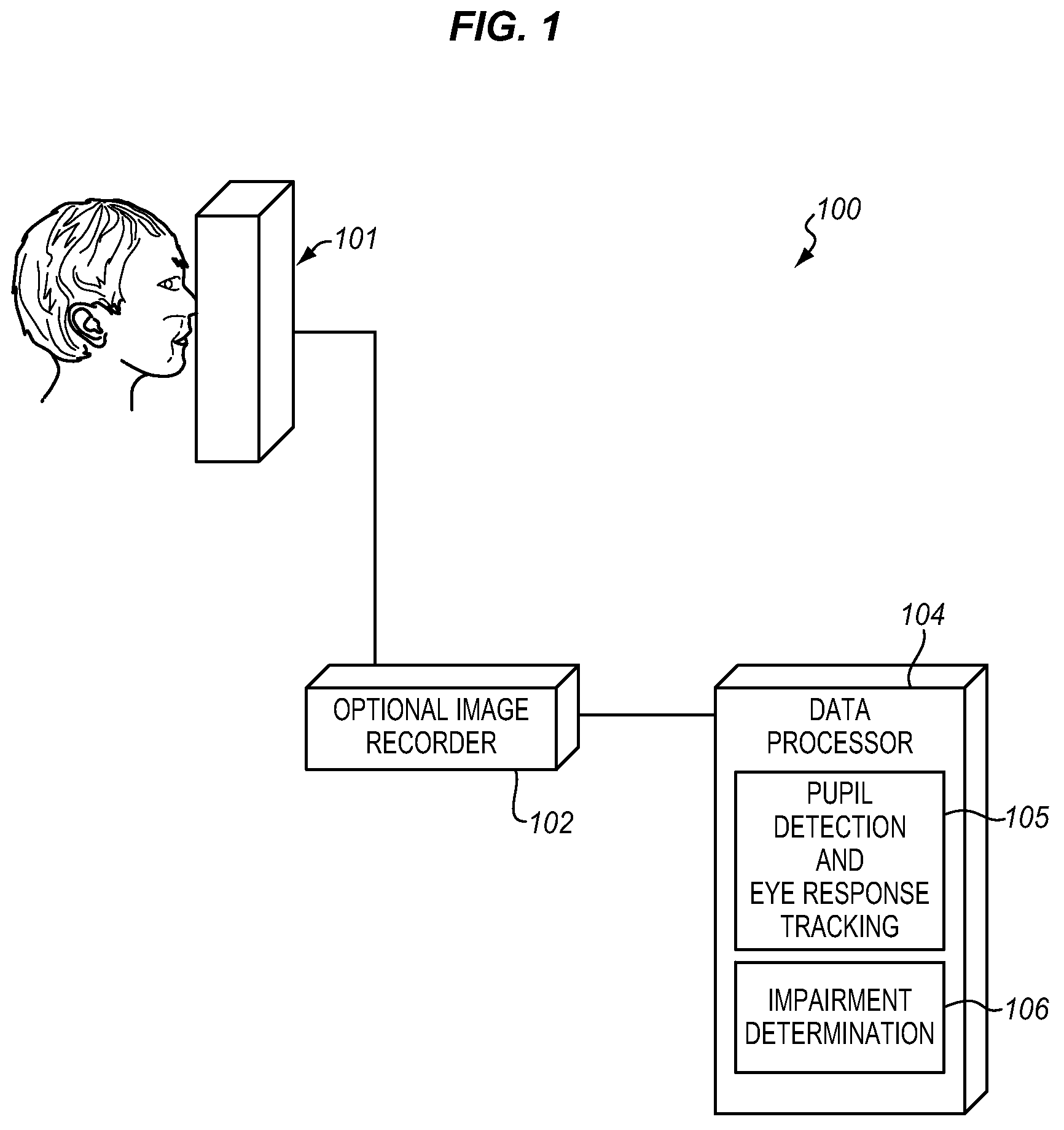System for analyzing eye responses to automatically track size, location, and movement of the pupil
a technology of eye response and system, applied in the field of system for noninvasively tracking the size, location, movement of the pupil, can solve the problems of placing themselves and others in danger of injury, reducing the efficiency of impaired employees' functions, and dramatic increase in the incidence of errors in impaired employees' work, so as to achieve accurate extraction of the pupil shape, high confidence and reliability, and quick and accurate localization of the subject's
- Summary
- Abstract
- Description
- Claims
- Application Information
AI Technical Summary
Benefits of technology
Problems solved by technology
Method used
Image
Examples
Embodiment Construction
[0022]Throughout this application, reference is made to the effects of impairment by drugs. It is understood the term “drugs” includes not only medicinal substances and addictive narcotics, but also is to be understood to include any other ingested substance which affects the brain, such as alcoholic beverages and the like.
System Characteristics
[0023]FIG. 1 illustrates a block diagram of the present pupil tracking system 105 which is implemented, for example, as part of an impairment determination system 100, where a user interface 101 is used to administer the predetermined test protocol to the subject. The use of the impairment determination system illustrates the operation of the present pupil tracking system and provides a practical example of the benefits of this system, and is not intended to limit the scope of the appended claims. In this application, the user interface 101 can be a device, such as that shown in the above-mentioned U.S. Pat. No. 5,137,345, which includes illu...
PUM
 Login to View More
Login to View More Abstract
Description
Claims
Application Information
 Login to View More
Login to View More - R&D
- Intellectual Property
- Life Sciences
- Materials
- Tech Scout
- Unparalleled Data Quality
- Higher Quality Content
- 60% Fewer Hallucinations
Browse by: Latest US Patents, China's latest patents, Technical Efficacy Thesaurus, Application Domain, Technology Topic, Popular Technical Reports.
© 2025 PatSnap. All rights reserved.Legal|Privacy policy|Modern Slavery Act Transparency Statement|Sitemap|About US| Contact US: help@patsnap.com



